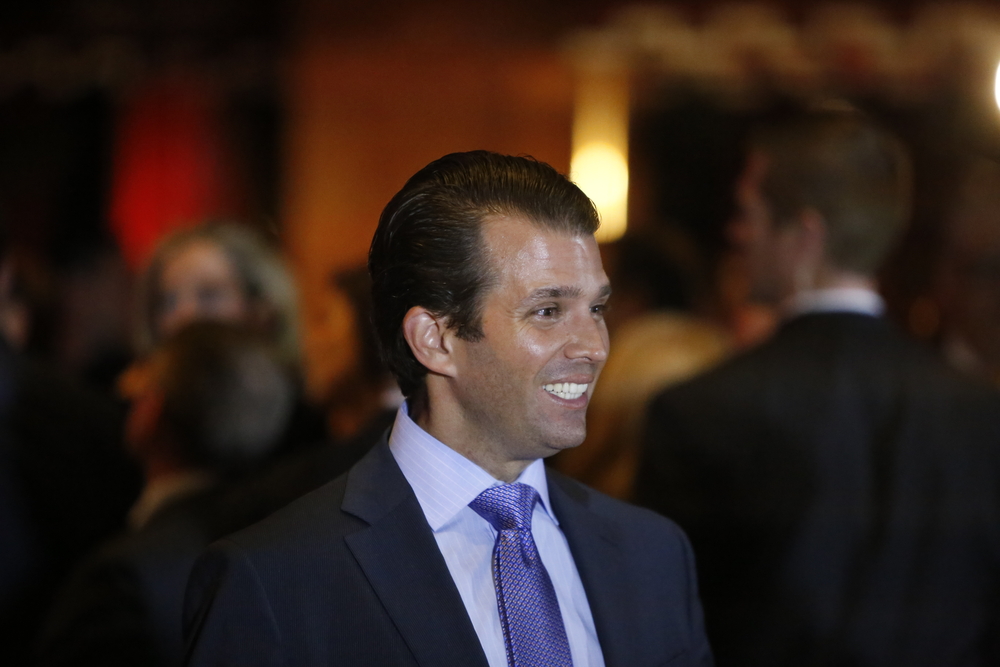Trump Jr. Saga Shows the Importance of Getting It Right the First Time

This week’s big story — the revelation of Donald Trump Jr.’s meeting with a Kremlin-connected lawyer — once again raises one of the most important issues in crisis communications: getting the response right from the beginning. Trump Jr. clearly didn’t do that, and his subsequent disclosure of his own emails about that meeting also raises questions about dealing with reporters who come seeking a comment during a crisis.
We’ve been here before. We have no lack of scenarios in which a company botches its initial crisis response and has to go back again and again to get it right.
Back in April, United Airlines famously went from arrogant to abject in its response to a passenger being dragged from a plane. Less than a week before that, Pepsi found itself in a similar situation over a new ad accused of belittling civil-rights protests.
In both situations, the companies developed multiple-statement disease because their first attempt (or attempts) didn’t resonate with the public. In Trump Jr.’s case, the problem appears to be that new facts kept surfacing about the meeting that contradicted his previous statements.
The New York Times first reported the meeting, which took place in June 2016 during the presidential campaign, on Saturday, July 8. Jared Kushner, President Trump’s son-in-law and adviser, and Paul Manafort, then the campaign chairman, also attended.
In his 84-word first statement on that Saturday, Trump Jr. (pictured) said the meeting had been set up “by an acquaintance” and mostly concerned a program for U.S. citizens to adopt Russian children that the Russian government had ended.
Air Force One
That statement was actually crafted by the president’s advisers and approved by the president on Air Force One as they returned from the G20 meeting in Germany, according to Peter Baker and Maggie Haberman of the Times.
“The president signed off on a statement from Donald Trump Jr. for the Times that was so incomplete that it required day after day of follow-up statements, each more revealing than the last,” Baker and Haberman wrote.
Indeed, the next day the Times reported that Trump Jr. had been informed that the real purpose of the meeting was to discuss possible opposition research on rival Hillary Clinton.
Trump Jr.’s second statement, for that story, was 242 words. In it he now admitted the lawyer said that “she had information that individuals connected to Russia were funding the Democratic National Committee and supporting Ms. Clinton.” But she had no such information and instead talked about the U.S. anti-Russia sanctions law that prompted the Russians to ban the adoptions.
So Trump Jr. at first said the meeting was about adoptions and then that it was supposed to be about dirt on Clinton.
The Times then reported that Trump Jr. had been told in an email before the meeting that the information the lawyer had on Clinton was part of the Russian government’s effort to get his father elected president. The next day, Tuesday, the paper had apparently obtained the emails and was prepared to go forward with a story about their content.
Email String
Trump Jr. beat them to the punch: At 11 a.m. ET, he tweeted the email string himself.
This raises the other interesting aspect of this situation from the standpoint of crisis communications: the pre-emptive release of information to take the edge off a potentially damaging story. Sometimes this sort of tactic can work. Done poorly, however, it almost certainly will backfire — which appears to be the case here.
In his 196-word note accompanying the emails, Trump Jr. said he released them “to be totally transparent.” But the timing suggests he did it because the Times had called him for comment as it was about to publish its story. He asked the Times for more time to respond and then released the email on his own, trying to dislodge the paper’sscoop.
While it is always important to be strategic in your media relations during a crisis, it is usually deadly to deal with reporters in anything other than an aboveboard manner. The reporters had followed the Times policy of allowing parties time to comment on a story; Trump Jr. took advantage of it by trying to take the story away from them. “You get one mulligan to do it this way, and he just took it,” said former George W. Bush press secretary Ari Fleischer.
As Michael M. Grynbaum of the Times put it: “Reporters seek comment ahead of an article’s publication to ensure a piece is fair; if the subject leaks the story to a competitor — or, in this case, leaks the information himself — it can be tough to re-establish trust.”
Indeed, it seems the response to this crisis has been more impulsive than thought out.
Photo Credit: a katz/Shutterstock
This is an abridged version of an article that appeared today on the CrisisResponsePro paid subscription portal. (CrisisResponsePro subscribers can access the full version by clicking here. ID and password are required.) To take advantage of all of the content, data, and collaborative resources CrisisResponsePro has to offer, contact us at info@crisisresponsepro.com.




 Back to Blog
Back to Blog